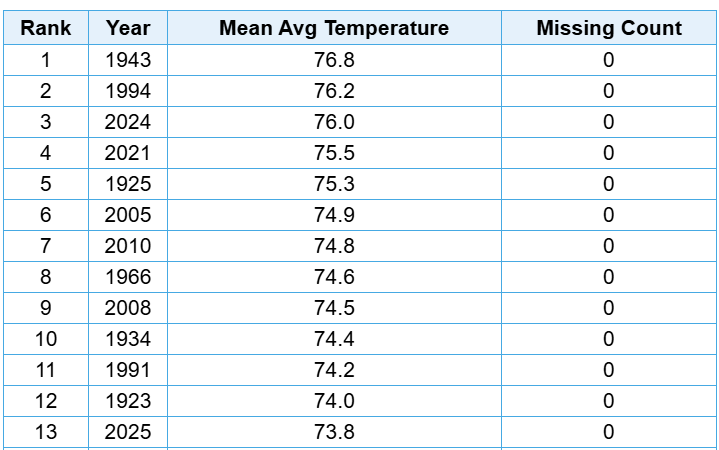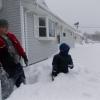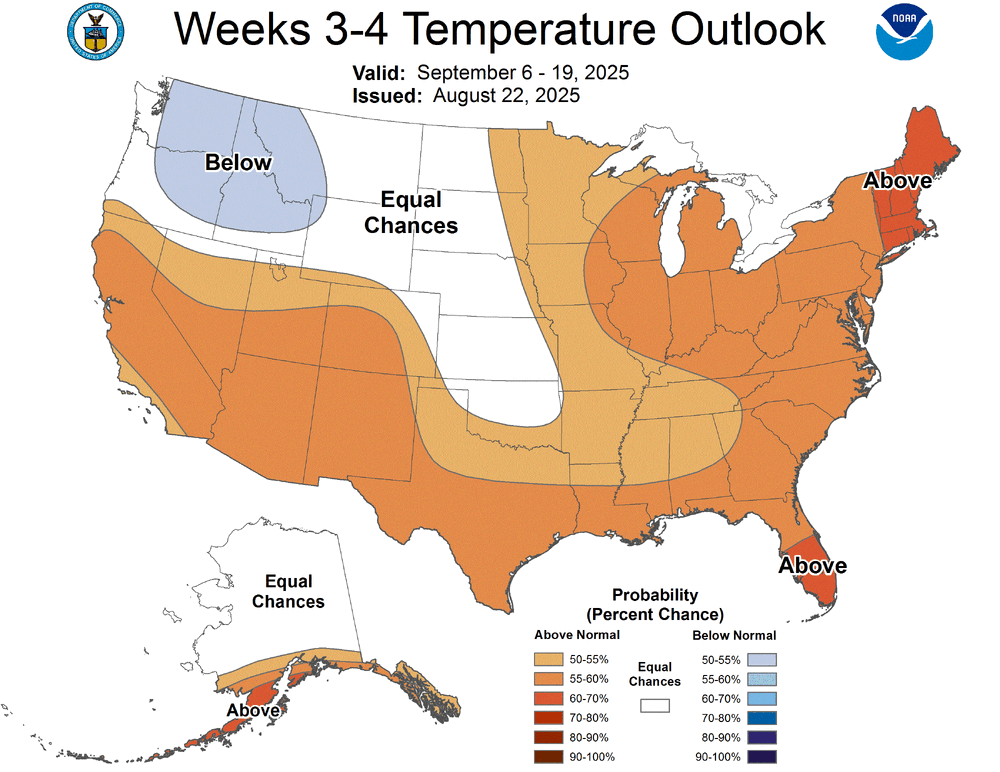All Activity
- Past hour
-
What's the deal with the Atlantic SSTs over the past week? They fallen off a cliff. Looks like it may be from Erin, pretty amazing to see how much of an impact a tropical system has on that.
-
My current HI is 107 and it's not even 11am. 92/77 here in Key West. Here until Friday, back home Sunday. Saw the cold front made it all the way down to southern Georgia. Impressive for August.
-
Dont shoot me for saying it, but it was chilly. and I put a vest on to go to work. Just gawjous weather we are having...like pinch me and tell me its not August weather. Couple that with another dud for hurricane activity (so far- although it may get interesting next month), and I'm happy as hell.
-
I’m up in the mrv and it’s about as dry as I’ve ever seen it. Lake Champlain lowest in 75 years. Perfect biking weather so no complaints.
-
Yeah, I dunno. Personally? I wasn’t attempting to qualify it one way or other - the advent of it is sort of a symbolic rite of passage. Perhaps even right on schedule. Some suggestion in the deep range that it will at least turn warmer again .. how much so unknown
-
I was using the extended climate record for your area which started back in 1888. Past Climatological Periods At Middletown-Harrisburg Area in Middletown-Harrisburg, PA (MDTthr) Period of record: 1888-07-01 to 2025-08-25 (current) - 138 Year(s) Time Series Summary for Middletown-Harrisburg Area, PA (ThreadEx) 20 warmest summers dense rank sorting by temperature Click column heading to sort ascending, click again to sort descending. 1 2020 77.9 0 2 1966 77.6 0 3 2016 77.3 0 4 2021 77.1 0 5 2024 76.9 0 6 2010 76.8 0 7 2022 76.7 0 - 1999 76.7 0 8 2019 76.5 0 - 2005 76.5 0 9 1991 76.4 0 10 1900 76.2 0 11 1943 76.1 0 12 2002 76.0 0 13 2025 75.9 6 14 2011 75.6 0 - 1995 75.6 0 15 1994 75.5 0 16 2018 75.4 0 - 1955 75.4 0 - 1949 75.4 0 17 1993 75.3 0 18 2012 75.2 0 - 2006 75.2 0 - 1988 75.2 0 19 1974 75.0 0 - 1973 75.0 0 - 1939 75.0 0 20 2015 74.9 0 - 1952 74.9 0
-
The models have had a hard on for pinching off a mid level low over Brian for some reason … heh. … whatever he did to incur this wrath aside it appears to be legit. It’s only 4 days away so -
-
What's to hate about that
-
Are you telling me that this wording Wasn't meant to push any sort of agenda that this Summer was not as warm as others claim? bluewave brought up that you're comparing against the warmest 30 year average, which is a completely valid criticism. From what I can tell June's "only +1.3" is 13th warmest out of 136 years. Words like "only" or "barely AN" are only applicable if we isolate the current 30 year average as the baseline for absolute warmth or cold. That is way more narrow of a scope than what bluewave did, comparing to the entire range of years. Comparing against 136 years is a way better benchmark than just 30.
-
Just like yesterday’s 12Z and today’s 0Z, the 6Z Euro has the low come off Africa Fri evening (not that far out…that’s why I think it’s worth posts). It becomes a TD Saturday night near the CVs, moves slightly S of due W from there, and ends up near 16N, 30W at 144 still as a TD. If this keeps up a few more runs, it would call for a lemon, especially with the CVs potentially impacted within only 5 days. Edit: Actually, with rather strong support by the Euro and Icon, some support by the CMC and JMA, and on/off support by the UKMET, I feel that if the Euro/Icon were to hold onto this at 12Z and if the UKMET were to get it back, it would then already be lemon-worthy even if the GFS still doesn’t have it.
-
Saturday looks like an early autumn vibe in the air... kind of like the shot before the shot across the bow air mass. 69 to 71 highs? Not these faux suggestions merely because we're sensing the daylight slipping and it happens to not be as hot … when it's still climate okay and sun strength to actually be hot ... lol. But don't tell that to the ACATT crew, huh. Anyway, it looks like hydrostats slip beneath 560 for the first time in months. That's an important metric/distinction for me. Also, with cool pool mid level wobbling over CNE, we're probably going to pancake and shade the sun. So less shoulder offset.
-
MDT's summer records start in 1992. That means, including this year, there are 34 years of summer records. Assuming your calculation is correct, a "top 20th warmth" is just like saying the 14th coolest. So why didn't you say it like that? I think you made my point.
- Today
-

2025 Atlantic Hurricane Season
BarryStantonGBP replied to BarryStantonGBP's topic in Tropical Headquarters
LMAOOOOOOO -
But let me tell you I got some news for you, And you'll soon find out it's true... She's already gone. Woo hoo hoo woo hoo hoo
-
Rain! Had more than expected, with 0.47" just before sunset and another 0.27" between 10:30-11 PM. August total is now 1.02" and met summer 4.99". Driest met summer thru 2024 is 7.24" in 2002. That record is toast. (Max is 23.82" in 2009.)
-
Not the nice part of Autumn though, perpetual November. Heating bills and no snow.
-
-
“Highlights • The PMM index defined in this study removes the signals of ENSO more effectively. • A positive PMM is weakly related to El Niño, while a negative PMM is more convincingly related to La Niña.” https://www.sciencedirect.com/science/article/abs/pii/S0169809524000917
-
Records: Highs: EWR: 103 (1948) NYC: 103 (1948) LGA: 103 (1948) JFK: 100 (1948) Lows: EWR: 51 (1942) NYC: 53 (1887) LGA: 53 (1940) JFK: 53 (1963) Historical: 1591: Roanoke Island was again struck by a severe storm. The winds blew out of the northeast, directly into the harbor. Waves crashed on a sandbar and currents in the area became quite dangerous. (Ref. for the storm of 1591) 1635: New England on August 25th and 26th: The Great Colonial Hurricane strikes the New England coast. Rev. Increase Mather writes: "...no storm more dismal than the great hurricane." Many shipwrecks and several near-disasters occur during the storm, one of which would give birth to a favorite New England legend surrounding Thacher's Island. (Ref. WxDoctor) 1827: A hurricane originating near the Windward Islands struck Cape Hatteras, before moving northeast offshore Virginia, Maryland, and New England. Initial reports from Wilmington, NC indicated that this was a storm of great intensity as it passed by to their east. One report gave an account of waves over the top of garden fences some 6900 feet from the beach. Other reports indicated storm tides greater than 10 feet above normal levels. The western end of Pamlico Sound, reported water levels 12 to 15 feet above ordinary levels. The following first hand account of this storm in Virginia was from the Tazewell Papers in the Virginia State Library. Henry Tazewell wrote to his brother John in New York and described the storm as such. "....A severe gale which continued for three days changed the climate here entirely and persons are clad generally in full suits of winter clothing; the same gale has done great injury to shipping and to present crops. The fodder is worthless and the corn in many places is much broken by the wind." The gale "...commenced in the forenoon of August 25th and continued to increase until the evening, when it blew tremendously. About midnight, the rain ceased and the gales somewhat abated, though it continued to blow fresh all day on the 26th." At the height of the storm, winds unroofed a two story building on Talbot street in Norfolk and commenced to blow away the second floor of the building. Livestock was swept away in large numbers. Corn was leveled at Belleview...a mill dam was torn to shreds and the bridge over it was swept away. (Ref. for St. Kitts Hurricane) 1864 - A train running from Cincinnati to Chicago was derailed by a tornado in Dearborn County, Indiana, or 75 miles southeast of Indianapolis. Two passenger cars were lifted from the tracks and dropped in a ravine which injured 30 people. 1883 - Krakatoa Volcano exploded in the East Indies. The explosion was heard more than 2500 miles away, and every barograph around the world recorded the passage of the air wave, up to seven times. Giant waves, 125 feet high and traveling 300 mph, devastated everything in their path, hurling ashore coral blocks weighing up to 900 tons, and killing more than 36,000 persons. Volcanic ash was carried around the globe in thirteen days producing blue and green suns in the tropics, and then vivid red sunsets in higher latitudes. The temperature of the earth was lowered one degree for the next two years, finally recovering to normal by 1888. (David Ludlum) 1895: Snow flurries affected parts of Pennsylvania, New York and New England with snow observed as far south as Hartford, CT. (Ref. Wilson Wx. History) 1910: Peoria, IL registered a low temperature of 41°. This established a record for the month of August, although it has been tied twice since then. Daily low temperatures were established at Lincoln, IL with 37°; Decatur, IL: 44°; and Champaign, IL: 46°. (Ref. Wilson Wx. History) 1915: Severe cold and killing frosts across Minnesota with 23 degrees at Roseau, MN. (Ref. AccWeather Weather History) 1924: A hurricane brushed New England with 80 mph winds reported at Blue Hill Observatory in Milton, MA. The pressure at Nantucket Island dropped to 28.71 inches of mercury. Boston, Massachusetts recorded its lowest pressure 29.26 inches of mercury for the month of August. (Ref. NOAA Boston Weather Events) 1940: Boston, Massachusetts had its lowest August temperature of 46 °F. (Ref. NOAA Boston Weather Events) 1949 - A hurricane made landfall at Delray Beach. Winds reached 153 mph at the Jupiter Lighthouse before the anemometer failed. The hurricane caused 45 million dollars damage to crops, and also caught the Georgia and South Carolina coast resulting in another two million dollars damage. (David Ludlum) 1965 - Late night severe thunderstorms associated with an unusually strong late summer cold front produced 100 mph winds straight line winds in the Chicago area and northwest Indiana. In Lake County IND, high winds derailed a train near Crown Point, and left a canoe suspended among telephone lines. Two nights later the temperature at Midway Airport in Chicago dipped to 43 degrees, establishing a record for the month of August. (Storm Data) (Hugh Crowther) 1976 - A weak tornado touched down briefly in the Hockley Hills near Kiana, AK, about 29 miles north of the Arctic Circle. (The Weather Channel) 1987 - Showers and thunderstorms drenched northern Illinois during the morning and afternoon hours pushing August rainfall totals for Chicago, Moline and Peoria to new all-time highs for any month of the year. By the end of August, Chicago had received 17.10 inches of rain, which easily surpassed the previous record of 14.17 inches established in September 1961. (The National Weather Summary) 1988 - A dozen cities in Texas, Colorado and California reported record high temperatures for the date, including readings of 100 degrees at Pueblo CO, 106 degrees at Wichita Falls TX, and 109 degrees at Redding CA. Afternoon thunderstorms in Utah deluged the town of Beaver with more than an inch of rain in twenty minutes. (The National Weather Summary) 1989 - Anchorage, AK, was soaked with a steady rain, and the 24 hour total of 4.12 inches smashed their previous 24 hour precipitation total of 2.10 inches. It also pushed their rainfall total for the month past their previous record for August. (The National Weather Summary) 1993: Butte, MT picked up 5 inches of heavy, early season snow. (Ref. AccWeather Weather History) 1996: Norfolk, VA lightning seriously injured two boys who were sitting at a picnic table beneath a tree. (Ref. Lightning - Virginia Weather History) 2002: No tornado damage, just high straight-line winds. Severe thunderstorm winds to 87 mph overturned 15 empty railroad cars in Wallace, KS; each had a posted weight of 15 tons. (Weather Guide Calendar with Phenomenal Weather Events 2011 Accord Pub. 2010, USA) A severe thunderstorm produced large and damaging hail at Cheyenne, WY during the evening. Hail up to the size of baseballs fell over especially the central and west parts of town producing widespread damage, particularly to roofs and automobiles. Total damage estimates exceeded $30 million dollars. (Ref. WxDoctor) 2003: A derecho associated with a cluster of severe thunderstorms affected parts of Michigan and states eastward to Washington, DC. Strong winds left hundreds of thousands of customers without power, just weeks after the Great Blackout of 2003. The Great Blackout of 2003 was Thursday, August 14, 2003, just before 4:10 p.m. EDT. At the time, it was the second most widespread blackout in history, after the 1999 Southern Brazil blackout. (Ref. Wilson Wx. History) 2005: Katrina made landfall in southern Florida on August 26 as a Cat 1 hurricane. It crossed Florida and headed through the Gulf of Mexico, growing in strength to a Cat 5 while still offshore of Louisiana on August 28, with top wind speeds of 175 MPH and a central pressure of 902 MB. Fortunately before making landfall on August 29 in Eastern Louisiana/southern Mississippi it diminished somewhat in intensity to a Cat 3. There were 1833 deaths and $81 billion in damages, the costliest hurricane ever in the United States. Ref. (Weather Underground Hurricane History Archives - Katrina) Also see -- Complete History of Hurricane Katrina 43 pages Katrina made landfall again see the date - (August 29, 2005) for more information. 2007: The remnants of Hurricane Dean produced thunderstorms and heavy rain all over the San Diego Metro area in southern California. Two inches of rain fell in just 90 minutes at Escondido during the morning. (Ref. Wilson Wx. History) 2017: Harvey's intensification phase stalled slightly overnight from August 24–25, however Harvey soon resumed strengthening and became a Category 4 hurricane late on August 25. Hours later, Harvey made landfall near Rockport, Texas, at peak intensity. The strongest winds were focused just northeast of Corpus Christi, around Rockport. The highest reading of 132 mph was registered at Port Aransas. Harvey, a tropical storm by Tuesday morning with its eye hovering over the Gulf of Mexico, could still dump up to 15 inches of rain on portions of southeastern Texas and southwestern Louisiana, including the saturated Houston area, where thousands have been rescued and many more still wait for help. The greatest problem would be the record rainfall amounts. (15 inches of rain and more to come) (Harvey made landfall near Rockport, Texas)(Satellite-before-Landfall on the 24-25 landfall near Rockport, Texas) 2020: Wednesday- August 26 -2020 Nearing landfall, Laura reached peak intensity as a category 4 hurricane early Wednesday evening as a NOAA hurricane hunter aircraft indicated that maximum sustained winds had increased to 150 mph as the center of Laura was approximately 120 miles to the south of Lake Charles, LA. as the central minimum pressure fell to 937 mb ( inches of mercury). At that time, Laura's outer bands had begun moving onshore along the Louisiana coast, accompanied by strong winds, steady rain and several possible tornadoes. Hurricane Laura made landfall along the Louisiana Gulf Coast near Cameron, LA just after midnight on
-
LOL at using hot button terms like agenda, shocked, and appalled. Try taking a step back and just looking at the actual data instead putting a strong emotional charge on it. Your area is further south than where the strongest Northeast warmth has occurred this summer. MDT is currently at an average summer temperature of 75.9°. That is the 13th warmest average summer temperature. You guys should slip back several spots with the cooler pattern to close out the summer. The current departure is only +0.7°. So the actual summer will finish up with top 20 warmth even if the departure isn’t that high.
-
Philly has double digit more 90 degree days (17!) than Trenton which is only 30 or so miles away. Their highs have been off according to even Mets on another Philly centric board.
















.thumb.png.4150b06c63a21f61052e47a612bf1818.png)



